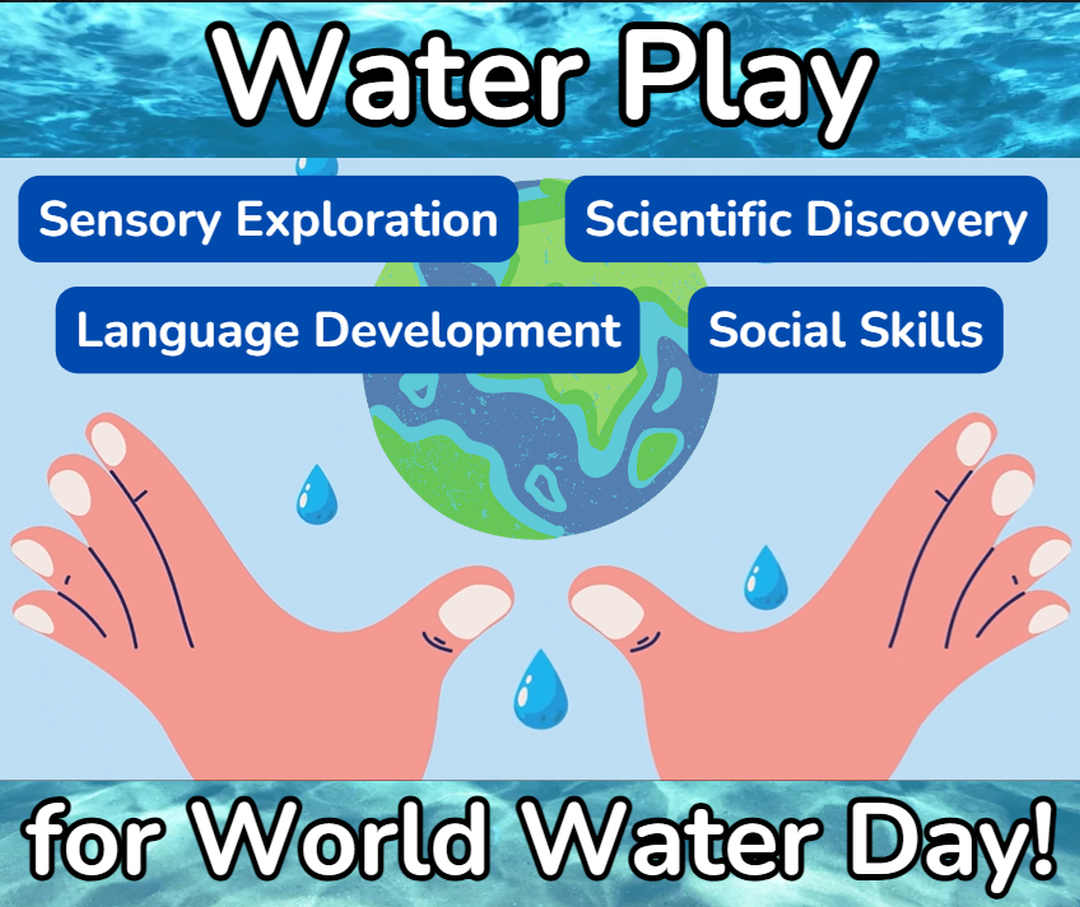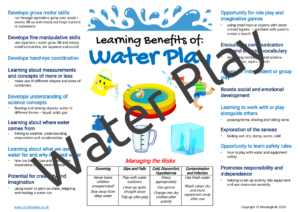On 22nd March we celebrate World Water Day, a day dedicated to raising awareness about the importance of water and advocating for sustainable water management.
For little learners, water isn’t just a valuable resource – it’s a magical world of exploration and discovery! As childcare providers, we can use water play as a springboard to celebrate World Water Day while promoting learning and development through engaging activities.
🌟Benefits of Water Play:
✋🏽Sensory Exploration: Water provides endless opportunities for children to experiment with touch, sound, and sight. Pouring, splashing, and stirring spark curiosity and develop fine motor skills.
💬Language Development: Through water play, children naturally use vocabulary related to filling, sinking, floating, and temperature.
🔎Scientific Discovery: Simple experiments like observing ice melting or watching objects float can spark a child’s interest in the natural world.
💞Social and Emotional Development: Water play encourages collaborative play, sharing, and turn-taking as children work together.
💦Water Day Activities
Make a Splash in your early years setting with these fun Water Play ideas:
- Sensory Bins: Fill a bin with water, add colorful cups, spoons, funnels, and small toys. Let imaginations run wild as children pour, scoop, and create!
- Rainbow in a Cup: Fill a clear container with water and layer drops of different colored food coloring. Observe the beautiful color mixing and discuss the science behind it.
- Washing Station: Set up a designated area with a small basin of water, sponges, and toy cars or dolls. Children will love “washing” their toys and mimicking household chores.
- Bubble Extravaganza: Making bubbles is a simple yet captivating activity. Talk about the different shapes and how they float in the air.
- Fishing Fun: Set up a small plastic pool or sensory bin with water and magnetic fishing rods and fish. Children can practice their fine motor skills while “catching” their aquatic friends.
- Water Painting: Set up a shallow tray with water and provide paintbrushes. Children can “paint” directly on the water’s surface, observing the colors blend and swirl.
- Rain Dance Party: Play music and encourage children to move their bodies like raindrops falling or waves crashing.
- Book Nook: Gather books about water, like “The Water Cycle” or “David Goes to the Beach.” Read together and discuss the importance of water for people, animals, and plants.
- “Water Cycle in a Baggie”: Check out this STEAM Activity experiment to demonstrate the water cycle.
- “Design a Water-Saving Poster”: Provide materials like paper, crayons, and markers, and encourage children to draw pictures or write simple messages about saving water.
⚠️Managing the Risks
As well as understanding the benefits that water play brings, it is crucial that we also manage any risk and keep children safe while they explore.
Here are some essential water play safety tips:
- Constant Supervision: Always maintain direct adult supervision throughout water play activities. Young children can slip and fall quickly, even in shallow water.
- Age-Appropriate Activities: Tailor water play to the children’s age and abilities. Toddlers and younger children may need to stay in a designated water play area, while older children can explore activities with more freedom.
- Empty and Clean Play Areas: After water play, ensure all tubs, pools, and equipment are emptied and stored properly to prevent the growth of mold or mildew.
- Non-Slip Surfaces: Use non-slip mats around water play areas to minimize the risk of slips and falls.
- Safe Items Only: Provide children with safe and age-appropriate toys for water play. Avoid small objects that could be choking hazards.






